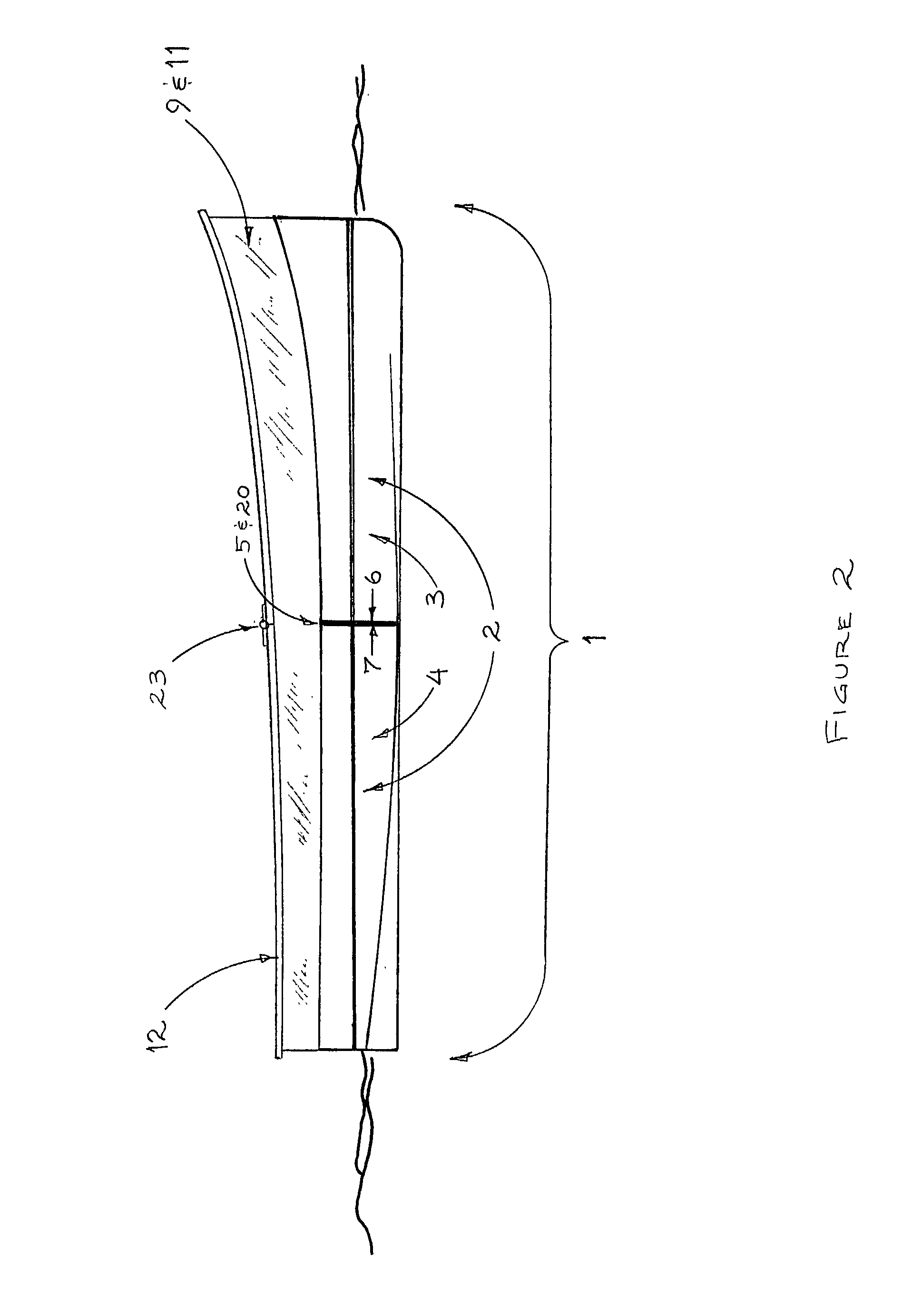Folding rigid-bottomed boat
a rigid-bottomed boat and folding technology, applied in special-purpose vessels, vessel construction, transportation and packaging, etc., can solve the problems of difficulty in carrying both a dinghy and a life-raft or life-boat, and the difficulty of carrying both a dinghy and a life-boa
- Summary
- Abstract
- Description
- Claims
- Application Information
AI Technical Summary
Benefits of technology
Problems solved by technology
Method used
Image
Examples
Embodiment Construction
[0041] Referring now specifically to the drawings, the preferred embodiment of the invention is shown in FIGS. 1, 3, 4, 6a, 6b, 8, and 10. As shown in FIG. 3, the unfolded use configuration of the boat 1 is indicated by solid lines and labeled OPEN; the closed configuration for storage and transport is indicated by phantom lines and is labeled CLOSED; rotational lines along which the bow element 3 moves as the boat transitions from the OPEN to CLOSED positions are indicated by a lifted phantom bow and arrowed arcs.
[0042] As shown in FIGS. 1 through 12, the boat 1 features a rigid bottom hull 2--i.e.; one composed of fiberglass reinforced plastic or other composite material (aramid or carbon reinforced laminates included), molded or cast PVC (polyvinylchloride) or similar plastic, wood, metal or other relatively stiff material-in order to enhance the water craft's performance while in use. The hull may be V-bottomed, round-bottomed, step-planed or otherwise shaped to be propelled by ...
PUM
| Property | Measurement | Unit |
|---|---|---|
| Length | aaaaa | aaaaa |
| Volume | aaaaa | aaaaa |
| Flexibility | aaaaa | aaaaa |
Abstract
Description
Claims
Application Information
 Login to View More
Login to View More - R&D
- Intellectual Property
- Life Sciences
- Materials
- Tech Scout
- Unparalleled Data Quality
- Higher Quality Content
- 60% Fewer Hallucinations
Browse by: Latest US Patents, China's latest patents, Technical Efficacy Thesaurus, Application Domain, Technology Topic, Popular Technical Reports.
© 2025 PatSnap. All rights reserved.Legal|Privacy policy|Modern Slavery Act Transparency Statement|Sitemap|About US| Contact US: help@patsnap.com



